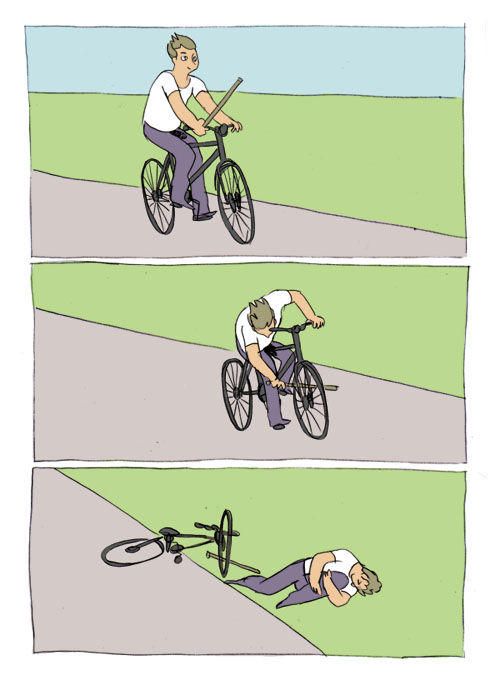What is Bike Stick
Create Your Own Bike Stick Meme Bike Stick
Bike StickBike Stick
The term 'Bike Stick' typically refers to a simple, often improvised, rod-like object used in conjunction with a bicycle. Visually, it might appear as a sturdy piece of wood, metal pipe, or similar material, held by a person either riding or standing beside the bicycle, or occasionally attached to the bike itself. It is a low-tech, versatile aid seen in various cycling contexts.
🤨 Meaning
At its core, a 'Bike Stick' is a versatile, low-tech accessory serving various practical purposes for cyclists. Unlike specialized cycling equipment, its meaning lies in its adaptability as an aid for balance, support, teaching, or even as an impromptu tool, embodying a DIY approach to common cycling challenges. It signifies an informal, practical solution to immediate needs related to bicycle handling and assistance.
📖 Origin
The 'Bike Stick' doesn't have a singular, documented origin or inventor. Instead, its use likely evolved organically from practical needs, particularly in contexts where formal cycling aids were unavailable or unnecessary. A prominent historical and ongoing application is in teaching children to ride bicycles. Parents or guardians often use a stick to hold the rear of the bike, providing stability and control without directly holding the child, allowing the learner to focus on steering and pedaling while gradually developing balance. This method is widely adopted globally due to its simplicity and effectiveness. While less formal, its use can be observed in various online tutorials and community discussions, for example, on platforms like YouTube where 'how to teach a kid to ride a bike with a stick' videos demonstrate this technique (e.g., search for 'teaching bike with stick'). Beyond teaching, its origin also stems from the need for quick, improvised solutions for bike maintenance or parking in the absence of dedicated equipment, reflecting a universal human tendency to use available resources for practical problems.
🎙️ Usage
The 'Bike Stick' is particularly suitable for scenarios requiring temporary assistance, stability, or a simple, non-specialized tool for bicycle-related tasks. Its utility shines in informal settings, educational contexts, and situations where improvisation is key.
Here are some common uses:
- Teaching Bicycle Riding: Perhaps its most common application, a Bike Stick is frequently used by adults to help children or new riders learn balance. By holding the stick attached to or against the bike's frame (often near the seat post), the instructor can steady the bicycle, preventing falls while the learner focuses on steering and pedaling, gradually releasing support as confidence grows.
- Temporary Bike Stand: In the absence of a kickstand or a dedicated bike stand, a sturdy Bike Stick can be strategically propped against the bike and the ground to keep the bicycle upright for short periods, useful for quick adjustments, loading gear, or temporary parking.
- Assistance and Support: For riders with physical limitations or those needing extra stability on uneven terrain, an accompanying person can use a Bike Stick to provide a steadying hand, offering support without direct physical contact with the rider.
- Improvised Tool: A Bike Stick can serve as a multi-purpose tool for various minor tasks, such as pushing a bike from a distance, retrieving an object that's out of reach, or even as a makeshift lever for minor repairs.
- Informal Games and Activities: In casual cycling games or events, a Bike Stick might be used as a prop or implement, for instance, in improvised versions of bike polo or other skill challenges, showcasing its adaptability beyond purely utilitarian functions.
🖼️ Related Images










